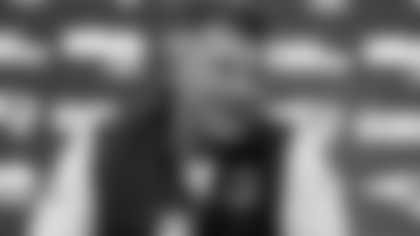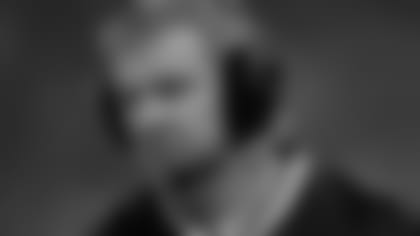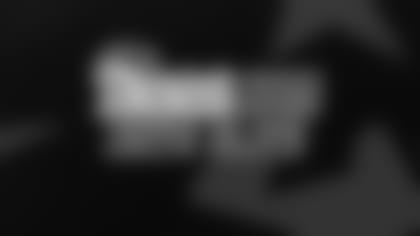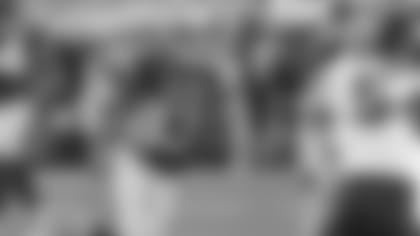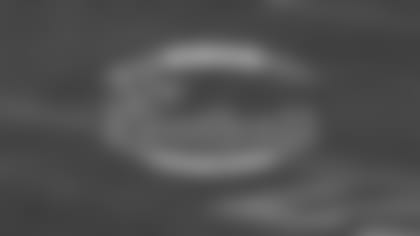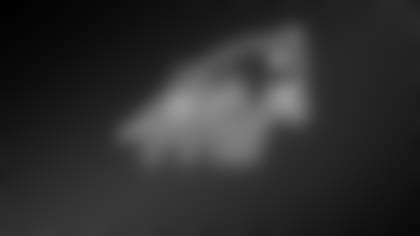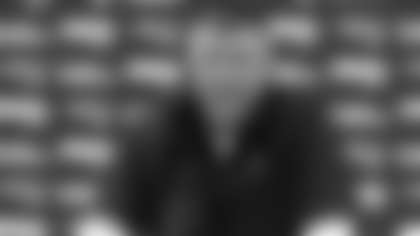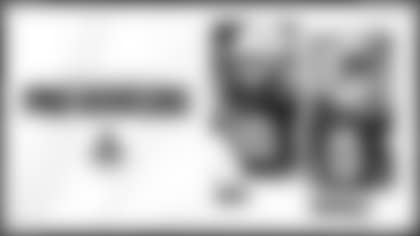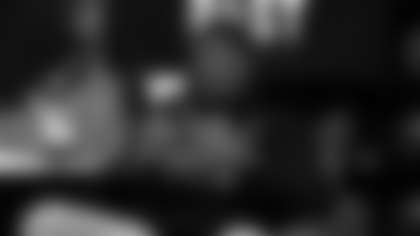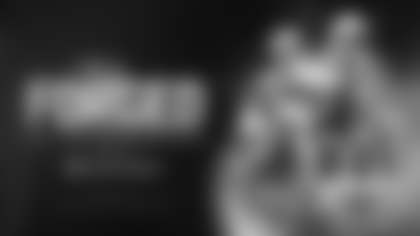New England Patriots head coach Bill Belichick addresses the media during his press conference at Gillette Stadium on Saturday, May 3, 2008.
BB: Well how is everyone doing here? Excited about covering this? It is great to be out on the field instead of sitting in those walls. Well, third practice I think we are plugging along and seeing some improvement. We are trying to get a look at guys do things the second or third time around. We are really starting to see some quick improvement, that's a good sign. That is what we are looking for. We tried to reinforce that. It is part of the evaluation too, to see how quickly players improve when they are instructed to do something and then are corrected on it. A lot of the time, it doesn't look good the first time. Like when all of us do things for the first time, it doesn't come out good but you work on it, improve, practice it and get coached on it. We are seeing better results. We will go out there again today and wrap up some of these decisions on the tryout kids and try to give a player some instruction and direction on what they need to do between now and May 15th, when the rookie players are allowed to come back to the facility. We will start getting ready for our passing camps at the end of the month. So that is kind of what we are up to today.
Q: What would be an example of what you would tell a specific player to work on in the next two weeks?
BB: Techniques that we have gone over in the last couple of days that he now maybe has the idea of how to do them, how to run a route. It could be part of the strength and conditioning things. We spend time on the different exercises we do in the weight room, how we do them, different running drills that we do, and change of direction, quickness drills and conditioning drills. So when they come back in May and join the program, they will be able to keep up or do a better job versus doing something else. I'm not saying that something else is bad but it's just not what we do. Then, they are just kind of behind about what our program is. At every position I'm sure the players are seeing things that we do that is different than what they did last year. I'm not saying that is good or bad either. It's just different. They are in a different system. Each coach will sit down with each player and say 'here are the things you need to work on between here and May.'
Q: Do think these kids get shocked between the coaching styles of college to Pros?
BB: Well, I think we demand a lot of the players here. There is a lot at stake. This is what we all do for a living, it is not a hobby. It is hard because this is the only program I am a part of so I can't tell you what is going on somewhere else. I think that when players get to this level they have experienced different coaches along the way. When they have played football for ten years at least - junior high, high school and college, maybe if there is a coaching change in their position at college, they probably get a sampling of different types of coaches like different motivation types and different teaching types. This is certainly not always the case but I think generally speaking. You can ask the players that but I would think they get the spectrum of different personalities and different styles.
Q: You talked about technique. At the end of practice a camera guy was filming Kevin O'Connell. Will he get a copy of that to show him what he needs to work on?
BB: Any time you have a specialist whether it be the punters, kickers, snappers or quarterbacks, guys that have a skill, a lot of time they can see what they are doing and you go over it with them. When you are back there trying to do something in the middle of a game, there is a lot of stuff going on and you are not thinking about that. But when you have time to work on something in a more isolated situation, a more isolated environment, when you are not trying to read coverage's and adjust to routes and all that. You are just trying to work on your footwork, your throwing mechanics or your punting technique. We do that with all the players.
Q: Did you see improvement in O'Connell over the past three practices?
BB: Yes. Some of the things we talked to him about yesterday, he is trying to do them today. Again, he has a lot going on out there too. I think the next couple of weeks will be a good time for all the players to work on techniques and the individual instruction they get from the coaches saying this is what you can do to improve and then we will put together in a team frame later on. He falls in that category but really they all do.
Q: When the draft was 12 rounds or 14 rounds was is harder to find un-drafted free agents to make a team?
BB: That's a good question but I would say no. There were more rounds but fewer teams. I don't know what the total number of players was. I'm sure there is less now than what it was then but I don't know how many free agents are signed. I would bet it's at least 12 to a team. What's that another 400 players after the draft? There were three or four hundred signed after the draft back when the draft was longer. There were 12 rounds in '91, '92 or '93. Somewhere in there is where it broke off. Maybe in '93 when I was in Cleveland, but it was funny. You would be sitting there in the 10th-, 11th-, 12th-round scratching your head on some names at that point. Then after the draft was over, you had to pick another 40 guys that we had to have. We were battling this team and that team for this player or that player, but we had to have this guy because this guy would have a chance to make our team. In the 11th round you didn't feel good enough to take them but now that he's a free agent, we thought, 'We have to get this guy.' Back at that time, there were a lot more tryouts than there are now. Maybe bring 50 guys to camp and try all 50 out or whatever.
Q: There were a lot more players running around at camp back when there were only 12 rounds of the draft. There was practically no limit.
BB: Yes, well the Cowboys did it. They would bring like 150 rookies to camp and then cut it down to 30 or 40. The original rookie camp was two weeks. It was 10 days and two weeks. My first year of the Colts we did that. We would practice those guys for maybe 15 or 16 practices, have a couple scrimmages in there and then pull 25 or 30 players. You would put them in with whatever you had. Back then; you didn't have free agency so you would basically have the same team year-to-year depending if someone retired. So you would have the same 45 or 50 guys and the other 30 would come from the best rookies that you could get out of a full training camp. Back in the days when we went to camp back on July 5 and July 6. Gee, I would love that, with six preseason games.
Q: [Matthew] Slater had the blue temp jersey on today. You mentioned yesterday he is going to be on both sides of the ball. Is that why he was in white yesterday and blue today?
BB: Well, just when you are installing stuff on both sides of the ball to kind of do it the other way. Leave him with one side for a week and flip him over on the other side. Well, now he is coming and all those other players on that side of the ball are already eight days into it. I think if we can go back and forth from day to day then we will do that. That way he has a chance to keep up on it. He is not being asked to do everything that everybody would do. Some of it is situational.
Q: How about the punter? Is there any concern that you cannot get a good evaluation of him because you are inside? Or does weather like this actually help you to put him through some conditions?
BB: Both. I think it is good to bring punters in when it is less than ideal conditions. That is a good part of our game up here. Where it is rain, cold, snow or wind. It is certainly not perfect. Even though you don't get the full punt up there, you can still see where they are hitting the ball. Even if you don't see the ball, just watching the guy kick and watching the way the punter drops the ball and when it contacts his foot, you can get a pretty good idea. You can see what you need to work on and how much work you have to do. I think Mike [Dragosavich] is pretty athletic. His is a tall guy so he is long and can generate some pretty good leg speed. I have worked with long punters like that, like [Dave] Jennings is a good example. He was a small school guy from St. Lawrence, 6-4 or 6-5, played wide receiver in college and he turned out to be a great punter. A lot of former quarterbacks and receivers too that we had at Cleveland are good examples. But all are like that, with good ball handling skills. I think those are good people to work with so we will just see how it goes.
Q: Are you surprised there are not enough guys like Tom Tupa and Danny White to fill these positions?
BB: Well, yes and no. Yes, but that is the way it is at every position. It's the same as long snapper, long snappers that don't play anything else really. There was a time when that is what every team had. You had to find a long snapper among your tight end, linebackers, and defensive linebackers, whoever it was. Even the Pro Bowl, you used to have to find a guy to be your long snapper. Now you just get a long snapper. You used to have guys that punted and kicked off or kicked. Dual guys and save a roster spot that way. There is no more of that anymore either.
Q: Is it just a case that you invest so much in a quarterback that you don't want to risk them anywhere else?
BB: No I don't think so. I don't think there is a lot of risk at punting. It's the same old thing. You got a guy that does it every day all day versus a guy where it's his second job. He works on it 10 percent of the practice and all other things being equal the guy that does it everyday, all day is going to bypass the guy who is just a part timer. At this level there are just too many good players and it's hard to put just ten percent of your time into someone when someone else is putting in 100 percent. You have to find someone with enough talent that is going to bypass that 10 percent guy. It is the same thing with kicking and snapping. It is just kind of the way of the league. Whereas, in college you see a lot more of that. You see that sometimes, it is just the better athletes that do it. It's like high school you know they really can still do it because there isn't anyone better that can do it. There is not too much of that at this level. In fact, I think there were even a couple of pure long snappers drafted this year. You don't usually see that.
Q: Any thoughts on seeing [Dom] Capers on the field for the first time?
BB: It is good to have him. Dom is a good fundamental coach and this is a fundamental weekend. He had a lot of great experience and schemes of different things he has done. He has an awful lot of experience on the defensive side of the ball and as a head coach. Just watching him coach fundamentally. It is good to have him, as he is a good addition.
Q: How much time from now will you have tryout decisions made?
BB: I think we will have it done by Monday at the latest. We will start working on some of it later today but I think we will have it done by Monday. It is still an ongoing process and it's not like we will sack up our bats and that will be the last personnel move until training camp. But I think as far as this group goes, we need to resolve it one way or another. For players we don't sign, maybe they will have an opportunity with someone else. For players that we do sign, we want to get moving with them. We are not going to know more than a week from now than we will know by tomorrow. If something changes, then that is another story. But for where we are at, we will just make a decision and move ahead with it.
Have a good weekend.








